Dave Martin. P. Eng., Quantum Technical Services Ltd.
Mike Smith P. Eng., Western Engineered Containment Ltd.
Comparison of Penetration Sealing Techniques for Polyethylene and Spray Applied Polyurea Geomembranes and Vapour Barriers – Western Engineered Containment
Abstract:
Sealing around penetrations remains a source of concern when designing a geomembrane containment or soil gas barrier. In most cases, sealing penetrations and attaching to structures rely heavily on the skill and techniques employed by the installer, and variation in the quality of construction greatly impacts the long-term success of the installation. In this study, carefully constructed polyethylene pipe boots, spray-applied polyurea, and tape connections were used to seal around a simple circular pipe penetration. The connections were stressed until failure by pushing the connection up the pipe and down the pipe. Polyurea connections were found to be easier to install, more consistent in performance, and provided a stronger attachment to the penetration. The performance of polyethylene pipe boots was found to vary greatly between samples prepared by the same Technician and between Technicians. While a level of leak protection can be achieved with polyethylene, it depended on several installation factors and provided inconsistent results. Taped connections are by far the least expensive and easiest connection to install; however, they provided the lease desirable results.
Introduction:
Effective procedures for sealing around penetrations that provide and maintain long term integrity is critical to the performance of a containment system. As Thiel and Dejarnett (2009) point out, “there is surprisingly little technical discussion related to the design and construction of leak resistant penetrations and attachments to structures. This subject has largely been relegated to a few simple details, mostly generated by the manufacturers and included in their standard literature.”
The difficulty of achieving this objective is well documented in failure analysis reports on geomembrane containments and under building soil vapour barriers and has been the personal experience of the authors of this paper during their twenty years in the industry. At present, there remains a significant probability that some amount of leakage may develop at these connections. Sealing at penetrations is one of the most common areas needing repair in a secondary containment application, meaning the containments are compromised for a period of time between failure and repair. In a primary containment application where small leaks can erode the subgrade, the result can be a catastrophic failure, resulting in a very costly environmental reclamation project and containment repair, lost time, regulatory scrutiny, and shareholder impact. Thiel and Dejarnett (2009) state, “The differences in materials, difficult to access geometries, the propensity of creating stress concentrations, the inability to non-destructively test, and the aging and cracking of sealants and gaskets all lead to a higher probability for leakage at these locations than there is in the free-field geomembrane.”
In this paper we attempt to study and compare current best industry practices for sealing around a simple circular pipe penetration using a polyethylene pipe boot, a spray-applied polyurea connection, and a taped boot, common in polyethylene under slab vapour barriers. In order to evaluate the strengths and weaknesses of options available to the designer, the properties of each of the sealing techniques were documented along with considerations for consequences of failure, including the ease of repair, and the likelihood that long term performance/integrity will be maintained.
Description of Laboratory Testing:
The connections were constructed on a 12” section of 3” OD steel pipe, using techniques described below. The completed connections were mounted on a steel plate with a 3 & 3/8” hole in the middle, with the pipe passing through the hole. A force was exerted on a connection to move it downward along the pipe, simulating ground settlement (under load) relative to the penetration; the force was exerted until the connection failed. In a second test, force was exerted to move a connection upward along the pipe, simulating ground heave relative to the penetration. Again, the force was exerted until the connection failed. The force and displacement required to break the seal of the penetration was documented; the seal break was confirmed by water test when a clear break was not visually observable. Force was applied to the connections using a custom-made jig, and an Instron model 4202 Tensile Machine.
Connection Preparation:
- Polyurea connections were sprayed on a Typar® Geotextile skirt cut to fit tightly around the 3” pipe. The steel pipe was first primed using PrecidiumTM ECSTM P-180 primer, and then the skirt and pipe were coated with spray applied PrecidiumTM ECSTM polyurea to a thickness of roughly 80 mil. The completed assemblies were allowed to cure for 7 days. The polyurea connections were produced by Quantum.
Note: Typar®is a registered trademark of Dupont de Nemours Inc. PrecidiumTM ECSTM are registered Trademarks of Quantum Technical Services Ltd. (Quantum) and Western Engineered Containment (WEC)
- Polyethylene Pipe Boots were constructed using thermoformed 3” LLDPE boots produced by Layfield Group. A seal between the pipe and the boot was created using butyl rubber caulking. The seal was banded with a ½” steel band and securely tightened. The upper edge was caulked with urethane caulking. The assembly was prepared in accordance with ASTM D6497. The Polyethylene Pipe Boots were assembled by WEC, an experienced polyethylene installer.
- Taped Connections were made with a 10 mil polyethylene vapour barrier skirt. The polyethylene sheet was cut with a + configuration to fit tightly over the 3’ pipe. The loose flaps extended up from the skirt and were connected to the pipe with 2’ Acrylic Tape (Canadian Technical Tape ltd.). The tape extended down a short distance onto the skirt to seal any openings. The tape boots were produced by Quantum, according to the techniques described by Stego Industries LLC.
Apparatus:
Results:
Downward Force
Upward Force
Discussion:
The polyethylene pipe boots showed inconsistency in their performance. This variation occurred within boots prepared by the same Technician, and between one Technician and another. With downward force the boots slid rather easily (40 to 80 lbf) in one set of samples but showed more resistance (350 to 450 lbf) in the second set. The deflection required to break the seal ranged from 11 to 62 mm. This would seem a natural reflection of the relatively complex construction technique that goes into a polyethylene boot, and the unavoidable variation in how closely the boot opening matches the penetration, the tightness of the clamp, and the ability of the clamp to hold the boot and move with it under force. Under upward forces, the results were more consistent and the displacement to break the seal was in line with the results where the force was in the opposite direction. In the design of a polyethylene pipe boot, there is a clear reliance on the skill of the installer, and in this case with two experienced technicians, they were unable to produce consistent performance with a very simple configuration. More complex boot configurations would amplify the uncertainty. The aging of caulking materials is also a concern in the long-term performance of a boot. In cases where the cost of a boot seal failure are considerable, the construction technique and regular maintenance of the boot would be critical.
The polyurea connection gave the strongest bond to the metal pipe, requiring much more force than with the polyethylene to displace the connection, and even under maximum force, the bond between the polyurea and the pipe was not compromised. The actual displacement to failure was similar to the average of the polyethylene pipe boot, but there was no case of rapid failure as when the caulking seal at the top of the boot was broken. Displacement was influenced by the lack of slack material allowed to stretch in our experimental configuration. Polyurea is actually a very stretchy material, and in an actual installation, the forces on the connection would be spread over a greater area. The complexity of installation is much lower with a spray-applied material, and the variation in performance between connections, even in more complex configurations, would be less than a polyethylene constructed pipe boot. Spray-applied connections are easily repaired with addition of more material. The added containment security and reduced/eliminated maintenance of the polyurea connection would be a factor in justifying the cost. In applications where there are many closely spaced penetrations, or complex in structure, the installed overall cost of polyurea may be lower than less expensive sheet goods.
Tape connections are obviously by far the easiest and least expensive to install. Requiring little experience, they can be done by a contractor installing an under-slab vapour barrier. The tape sticks reasonably well to the polyethylene sheet but the seal cannot withstand much force before it is along with containment integrity is compromised. For critical containments for dangerous soil gasses, hydrocarbons and chemicals, spray-applied polyurea geomembranes should receive consideration when designing a containment system..
Conclusion:
Effectively sealing around penetrations is a critical consideration when designing a containment. Polyethylene pipe boots are complex to construct, relying heavily on the skill and technique of the installer rather than engineering design. Inconsistent quality of polyethylene connections would be expected and was confirmed in the findings of this paper. This remains a major source of leaks at some stage in the lifespan of a polyethylene containment.
Polyurea spray-applied connections are stronger, easier to install, and provide consistent performance and long-term containment integrity. In terms of long-term performance, adaptation to external stresses, and ease off repair, polyurea offers significant advantages over traditional penetration sealing techniques.
When designing a containment, considering options to traditional pipe boots and overall geomembrane selection can resolve many weaknesses that have been traditionally been accepted as unavoidable.
For more information about WEC visit www.wecontain.com
References:
ASTM D6497, Standard Guide for Mechanical Attachment of Geomembrane to Penetrations or
Structures, American Society for Testing and Materials, West Conshohocken, Pennsylvania, USA.
Stego Industries LLC, Stego®Wrap Barrier/Retarder Installation Instructions. Stego Industries Website,
Thiel, R. and DeJarnett, G. (2009) Guidance on The Design and Construction of Leak-Resistant
Geomembrane Boots and Attachments to Structures. Thiel Engineering Website,
https://www.rthiel.com/uploads/ngrey/017%202009%20Leak%20Resistant%20Attachmentsv3.pdf
Share This:





 CDN NEWS |
CDN NEWS |  US NEWS
US NEWS 












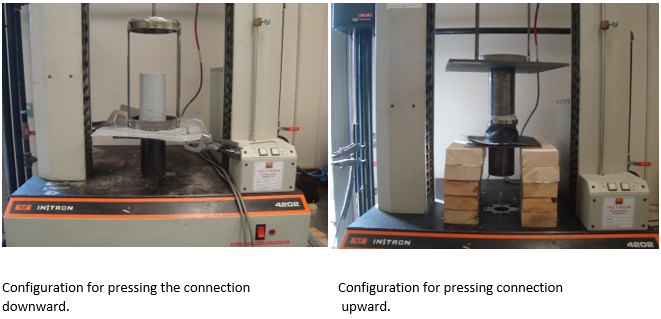
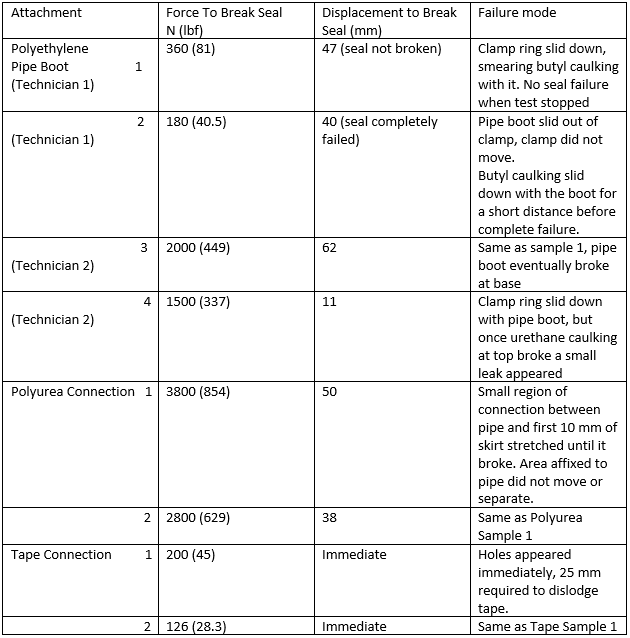
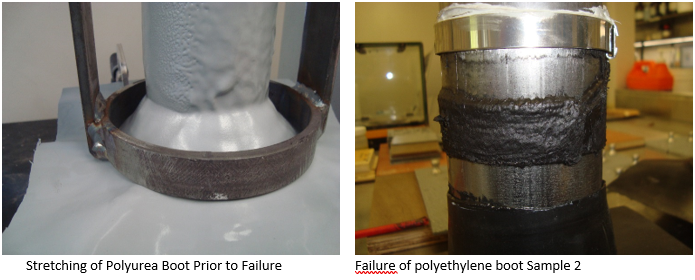

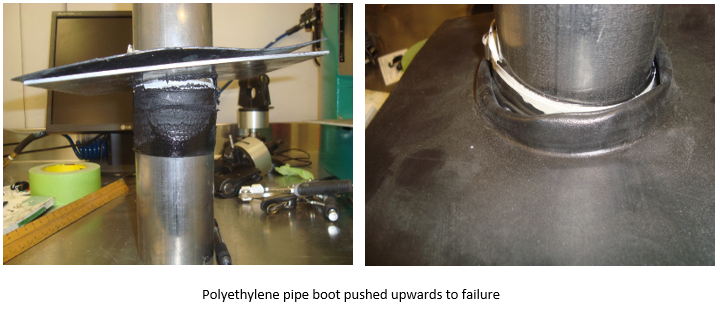
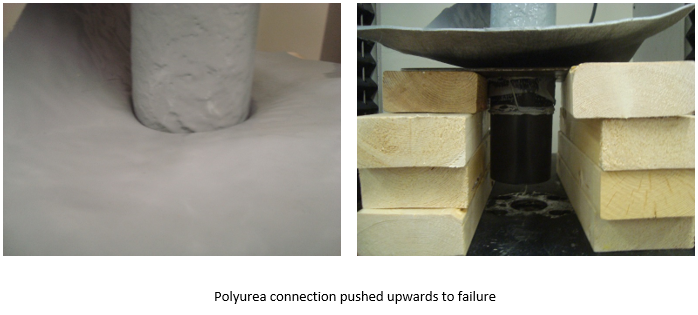



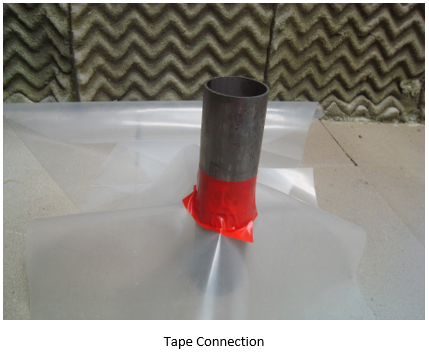




















Canada’s Advantage as the World’s Demand for Plastic Continues to Grow